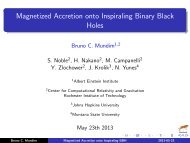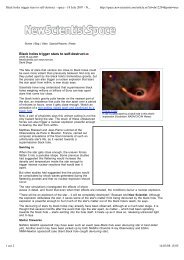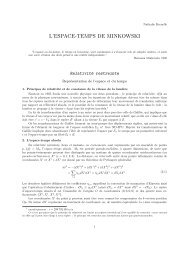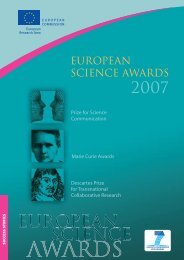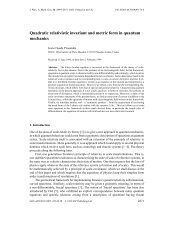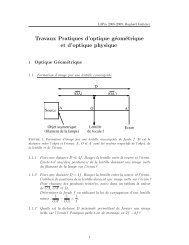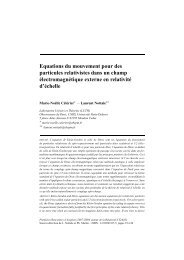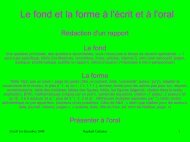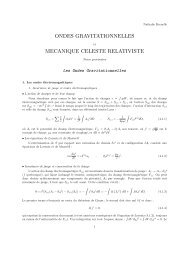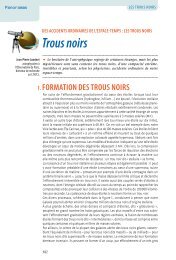Equation of state for compact stars Lecture 1 - LUTh
Equation of state for compact stars Lecture 1 - LUTh
Equation of state for compact stars Lecture 1 - LUTh
You also want an ePaper? Increase the reach of your titles
YUMPU automatically turns print PDFs into web optimized ePapers that Google loves.
A model <strong>of</strong> ground <strong>state</strong> crust<br />
Haensel & Pichon (1994)(HP94) took experimental masses <strong>of</strong> nuclei from the<br />
tables <strong>of</strong> Audi (1992, 1993 – private communication). 1 Because <strong>of</strong> pairing effect<br />
(nucleons in nuclei are superfluid!) only even-even nuclei are relevant <strong>for</strong> the<br />
ground-<strong>state</strong> problem. For the remaining isotopes, up to the last one stable with<br />
respect to the emission <strong>of</strong> a neutron pair, HP94 used theoretical masses obtained<br />
from the mass <strong>for</strong>mula <strong>of</strong> Möller (1992, private communication).).<br />
The equilibrium nuclides present in the ”cold catalyzed matter” are listed in Table<br />
1. In the fifth column one finds the maximum density ρmax at which a given<br />
nuclide is present. The sixth column gives the electron chemical potential µe at<br />
ρ = ρmax. The transition to the next nuclide has a character <strong>of</strong> a first-order phase<br />
transition. The corresponding fractional density jump ∆ρ/ρ is given in the last<br />
column. The last row above the horizontal line, which divides the table into two<br />
parts, corresponds to the maximum density, at which the ground <strong>state</strong> <strong>of</strong> dense<br />
matter contains a nucleus with mass measured in laboratory. The last row <strong>of</strong><br />
Table 1 corresponds to the neutron drip point which is determined theoretically.<br />
1 Some masses <strong>of</strong> unstable nuclei in these tables are actually semi-empirical evaluations based<br />
on the knowledge <strong>of</strong> masses <strong>of</strong> neighboring isotopes. More recent evaluations <strong>of</strong> nuclear masses<br />
are given by Audi et al. (1997) and Audi et al. (2003).<br />
Pawe̷l Haensel (CAMK) EOS <strong>for</strong> <strong>compact</strong> <strong>stars</strong> <strong>Lecture</strong> 1, IHP Paris, France 32 / 54



